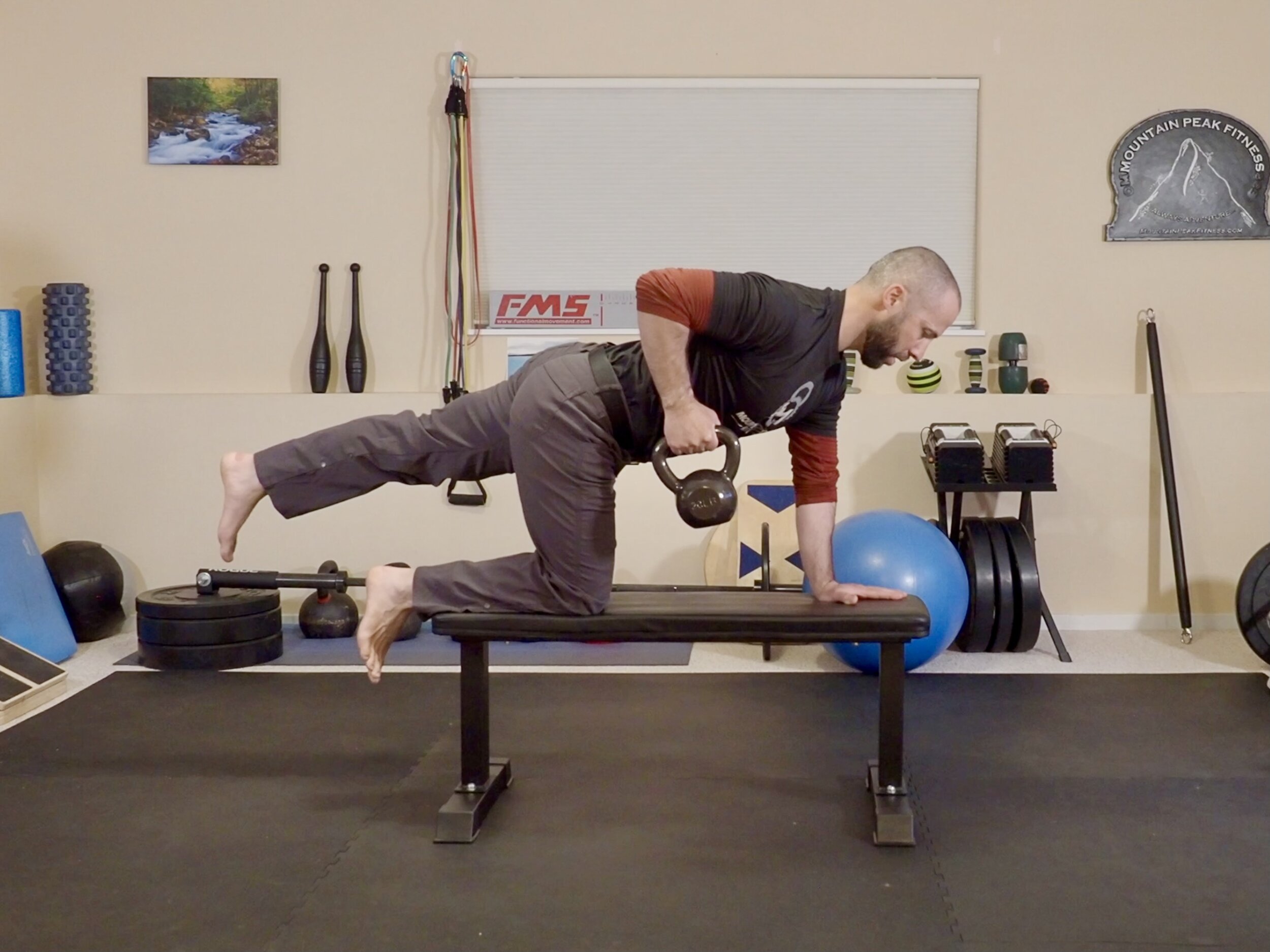Building Balance, Strength & Agility (featured on Runnersworld.com)
Building Balance, Strength and Agility. Any trail runner can increase endurance by simply spending more time out there, but how do you improve your finesse?
By Dimity McDowell
When you see a master trail runner like Scott Jurek in motion, it can be hard to think you both do the same sport. He floats; you trample. He clears obstacles; you get tangled up in them. He flies down hills; you inch down them, and still stub your toe. Any trail runner can increase their endurance by simply spending more time out there, but how do you improve your finesse?
In order to your develop balance, agility, and trail-specific strength—three vital components that make the difference between flailing and floating—we talked to two trail running coaches: Joe Azze, co-owner ofMountain Peak Fitness in Fair Lawn, New Jersey, and Joe Prusaitis, owner of Tejas Trails in Austin, Texas. The pair of Joes offered up ideas for workouts both in the gym and on the trail.
In the Gym
A proponent of creating a solid, injury-proof body in the gym, Azze is a fan of doing single-leg work. "That way, you can't favor one leg, as people normally do," he explains, "You eliminate imbalances and, in doing so, greatly reduce your chance of injury."
Joe 2 Favorite Exercises
Single-leg Reach with 1&2 Arms: Place one cone about two feet in front of you, and stand on your left foot. Bending your left knee, while keeping your abs tight and your back straight, reach forward with your right arm to touch the cone (or come as close as possible). Stand up and repeat. Start with 8 reps, and work up to 30. As you become stronger, vary the cone positions—put one at 9 o'clock and one at 3 o'clock, for instance—and challenge yourself by going barefoot. "Make sure the whole foot stays in contact with the floor," he says, "Don't let it roll to the outside." Repeat on opposite side. Benefit: This exercise strengthens major leg muscles—glutes, quads and calves—but doesn't allow you to favor your strong side. It also teaches balance on one foot while your knee is bent, and strengthens the stabilizing muscles in the foot so that when you land on each foot on the trail, your body is ready for impact.
Single-leg squats: Stand on one foot and concentrate on keeping your abs tight and your gaze forward as you lower yourself by bending the knee of your standing leg (not allowing your bent knee to travel in front of your ankle). Once you've mastered 12 continuous squats with good form, change the surface on which you're standing: try them on half of a foam roller, and as you get stronger, on a disc pillow or wobble board. The unstable surfaces mimic the terrain of the trail. "To improve balance, you have to continually challenge yourself," he says.
Benefit: Single-leg squats have a similar pay-off as the single-leg reach, but because you bend your knee further, the pay-of is even greater—more strength, more stability, more balance.
On the Trail
Head out with a running pal and find a rocky, root-filled, twisty or otherwise technical section on a flat portion of a trail. Have your friend stand on the side of the trail so she can watch you as you run it: she'll be able to see where your rhythm breaks or where you've made an inefficient decision with your footing. Start with five sets of 100 yards. For the first interval, go at 60 percent. Build your speed by about 10 percent for each interval, using your friend's commentary to working on the sections that are tripping you up (figuratively, hopefully, not literally). "Think about being smooth and agile," says Azze. "The stiffer you are, the more trouble you'll find yourself in." As you become more proficient, increase the length of the intervals. Azze also recommends focusing on shorter strides while trail running because they let you react quickly to all types of terrain, and allow you to keep your feet under your body, which is optimal for balance.
Up the Hills
More experienced trail runners doing hill repeats can wear a weighted vest. After a 20-minute warm-up, put on a vest that is 5-10 pounds. The extra weight helps you build core and leg strength, which will stabilize your body on all types of terrain, but doesn't weigh down your joints. "Because you're climbing, the extra impact from the weight on your joints isn't as intense as it could be on the flats," explains Azze, who recommends starting with four repeats of a hill about a quarter-mile long. When you reach the top, the best scenario is to have a friend carry the vest down for you; then you put it back on when you reach the bottom and sprint up again. Do the whole set, and then you be the Sherpa for her set. If you're solo, walk down slowly and in a controlled manner. Note: This can also be done wearing a hydration pack filled with water and/or gear, but make sure the pack doesn't exceed 15 pounds, and that the weight is spread as evenly as possible across your back. Also make sure the pack fits snugly.
Down the Hills
In order to get your balance and agility dialed on downhills, often the most nerve-wracking sections, you have to practice the downs the same way you do the ups: with repeats. Prusaitis has runners do 3-6 sets of downhill sprints on a moderately steep hill. "The goal is to not hit the brakes," he says. Physically, shorten your strides, so that your feet stay under your butt and, if need be, tack back and forth on the trail (your footsteps will form a "z") to slow down, instead of bracing your quads.
Mentally, think of two things: driving a car and speed reading. The former helps you not get too fixated on one object. "You can't stare at any one thing, or you'll miss everything else," says Prusaitis, who has finished the Hardrock 100 seven times, thanks to the speed of his descents. ("I'm not sure anybody goes slower than me uphill," he admits, "But I'm a downhiller. I weight 200 pounds and have run for 25 years injury-free.") Similarly, speed reading that trail gives you the perspective you need to stay upright. "When you speed read, you scan the page to get the gist of what's on it," he says, "Same thing on the trail: have your eyes about 10 feet in front of you, and trust that your mind is collecting the data it needs. Your foot will find the right spot because your mind has already registered it."
Although hill repeats with a weight vest sound as appealing as, well, hill repeats with a weighted vest, honing your balance and building your trail-specific strength will pay off in spades. "Do the work you don't want to do," Azze says, "And you'll reach the next level more quickly than you thought you could."
Click here to visit www.RUNNERSWORLD.com.














